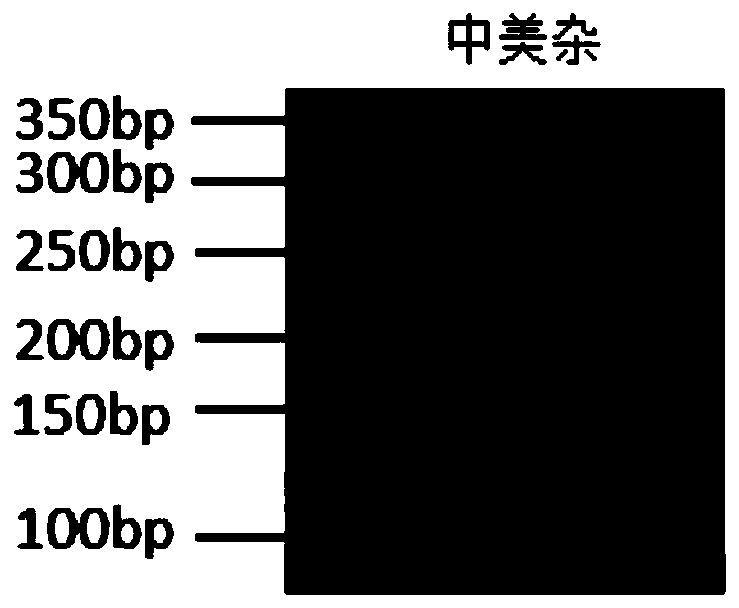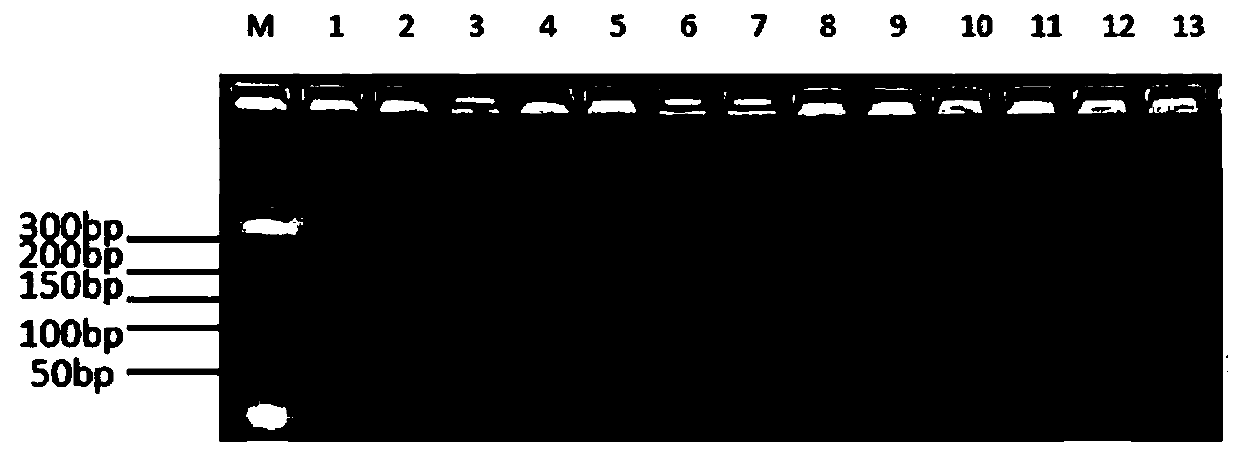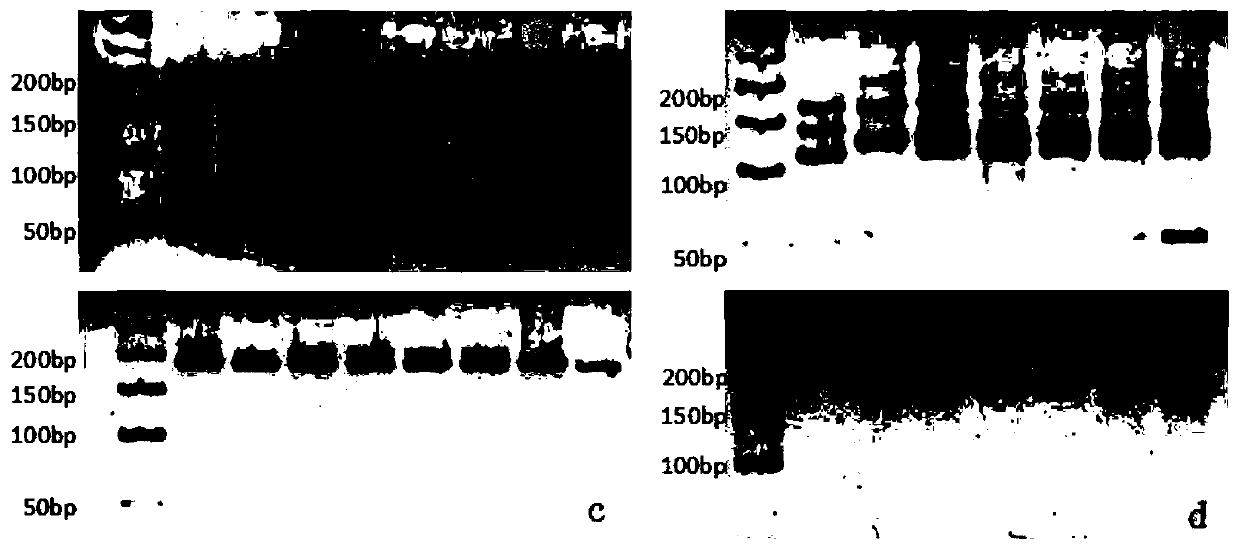A method for identifying the type of progeny tree species of Liriodendron tulipifera stand
An identification method and technology of Liriodendron, applied in biochemical equipment and methods, determination/inspection of microorganisms, etc., can solve problems such as inability to fully meet the needs of use, insignificant differences in morphological characteristics, and difficult to implement anatomical methods. Fast, efficient and practical effects
- Summary
- Abstract
- Description
- Claims
- Application Information
AI Technical Summary
Problems solved by technology
Method used
Image
Examples
Embodiment 1
[0030] A kind of identification method of tulip tree stand progeny tree type, concrete steps are as follows:
[0031] 1) The experimental materials in this example were collected from the provenance test forest of Liriodendron tulipiflora and its free-pollinated progeny in Longshan Forest Farm, Anji, Zhejiang. The ten mother trees in the forest test forest are five Chinese species (Z1, Z2, Z3, Z4, Z5) and five American species (B1, B2, B3, B4, B5), and the offspring each occupy a small plot of land. There is no strict block design, and the number of offspring in each plot is different, and they are collected one by one. When sampling, care should be taken to take the young leaves that have just unfolded on healthy plants, and after liquid nitrogen treatment, place them at -80°C until they are used in experiments.
[0032] 2) DNA extraction and detection
[0033] DNA extraction was carried out by CTAB method; DNA quality detection was analyzed by NANODROP instrument; PCR reac...
Embodiment 2
[0051] The special kit for the method of Example 1 includes at least a primer reagent used more than once. The primer reagent has a total of 1 pair of primers, and the amount used can be more than 25 times. The specific primer sequence is:
[0052] 119F:TACCATCCGTTAGTGCTTCCGCTCCTG;
[0053] 119R: CTTAGAATCGGGCATTCCACGCATCCA.
[0054] Preferably, the special kit includes DNA standard sample reagents for more than 25 detections, DNA extraction reagents for more than 25 detections, PCR reagents for more than 25 detections, and electrophoresis reagents for more than 25 detections; wherein,
[0055] The DNA standard contains at least 2 bands of 112bp and 124bp;
[0056] DNA extraction reagents: necessary reagents used in the CTAB method;
[0057] PCR reagents: conventional reagents for PCR amplification system;
[0058] Electrophoresis reagents: conventional electrophoresis reagents.
Embodiment 3
[0060] Use the special-purpose kit of embodiment 2 to carry out the identification method of hybrid Liriodendron stand progeny tree type, concrete steps are as follows:
[0061] 1) The experimental materials of this embodiment were collected from the Liriodendron tulipifera provenance test forest in Longshan Forest Farm, Anji, Zhejiang Province, without human intervention in the natural forest. A total of 107 samples were obtained by random sampling without repetition in the forest. When sampling, care should be taken to take the young leaves that have just unfolded on healthy plants, and after liquid nitrogen treatment, place them at -80°C until they are used in experiments.
[0062] 2) DNA extraction and detection
[0063] DNA extraction was carried out by CTAB method; DNA quality detection was analyzed and detected by NANODROP software; PCR reaction system used 10 μL system (75ng genomic DNA, 1.0μL 10×PCR Buffer, 1.2μL 2.5mM / L MgCl, 0.2μL 10mM / L dNTP , 0.5 μL 10 μM / L left...
PUM
 Login to View More
Login to View More Abstract
Description
Claims
Application Information
 Login to View More
Login to View More - R&D
- Intellectual Property
- Life Sciences
- Materials
- Tech Scout
- Unparalleled Data Quality
- Higher Quality Content
- 60% Fewer Hallucinations
Browse by: Latest US Patents, China's latest patents, Technical Efficacy Thesaurus, Application Domain, Technology Topic, Popular Technical Reports.
© 2025 PatSnap. All rights reserved.Legal|Privacy policy|Modern Slavery Act Transparency Statement|Sitemap|About US| Contact US: help@patsnap.com



